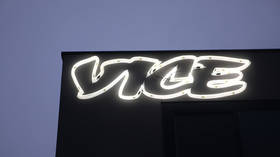VICE shuts down website and lays off ‘hundreds’ of staff


Vice.com has stopped publishing new content and laid off several hundred employees, its CEO announced late on Thursday. The outlet once valued at billions of dollars had to be rescued from bankruptcy last year, by a consortium including George Soros.
The website is still available, but its content management system was shut down minutes before midnight, according to one employee. The VICE company will “transition to a studio model,” CEO Bruce Dixon said in a message sent to the staff, as part of “fundamental changes to our strategic vision.”
“We create and produce outstanding original content true to the Vice brand. However, it is no longer cost-effective for us to distribute our digital content the way we have done previously,” Dixon wrote. Going forward, Vice will partner with “established media companies” to distribute its digital content on their platforms instead.
Refinery29, a “social-first” outlet Vice acquired in 2019, will continue to operate until the company can sell it off.
“Our financial partners are supportive and have agreed to invest in this operating model going forward,” Dixon noted. Vice had filed for Chapter 11 bankruptcy protection in May 2023, and was acquired by Fortress Investment Group and a hedge fund run by billionaire and Democrat mega-donor George Soros.
Whereas Vice once produced edgy video documentaries, in recent years the website ended up obsessed with left-wing politics and focus on gender and racial issues. One critic posted a collage of such articles on X (formerly Twitter), to celebrate Vice.com’s demise.
RIP in peace, Vice https://t.co/8ODO6kzrYhpic.twitter.com/BtB6mYJXr0
— pagliacci the hated 🌝 (@Slatzism) February 23, 2024
“Vice is failing because communism was a bad business model,” said Tim Pool, who used to work for Vice before launching his own media conglomerate.
“I wrote for Vice.com from 2012-2016, back when people still found it endearing that VICE would have a politics-oriented column,” independent journalist Michael Tracey said. “Truly an epic fail to have screwed it up this badly.”
Vice started out as a pop-culture and art magazine in Montreal, Canada in the early 1990s, founded by Gavin McInnes, Shane Smith and Soroosh Alvi. In 2001, the outlet moved to the hipster capital of the US, the Brooklyn neighborhood of Williamsburg, and rode the wave of social media popularity to becoming a powerhouse. McInnes left in 2008 over “creative differences” while Smith stepped down as CEO in 2018.
Funded by major corporations and venture capital throughout the 2010s, Vice was valued at $5.7 billion in 2017 and Smith was feted as a new-model media mogul. After his departure, however, the group struggled to attract capital and began laying off staff.